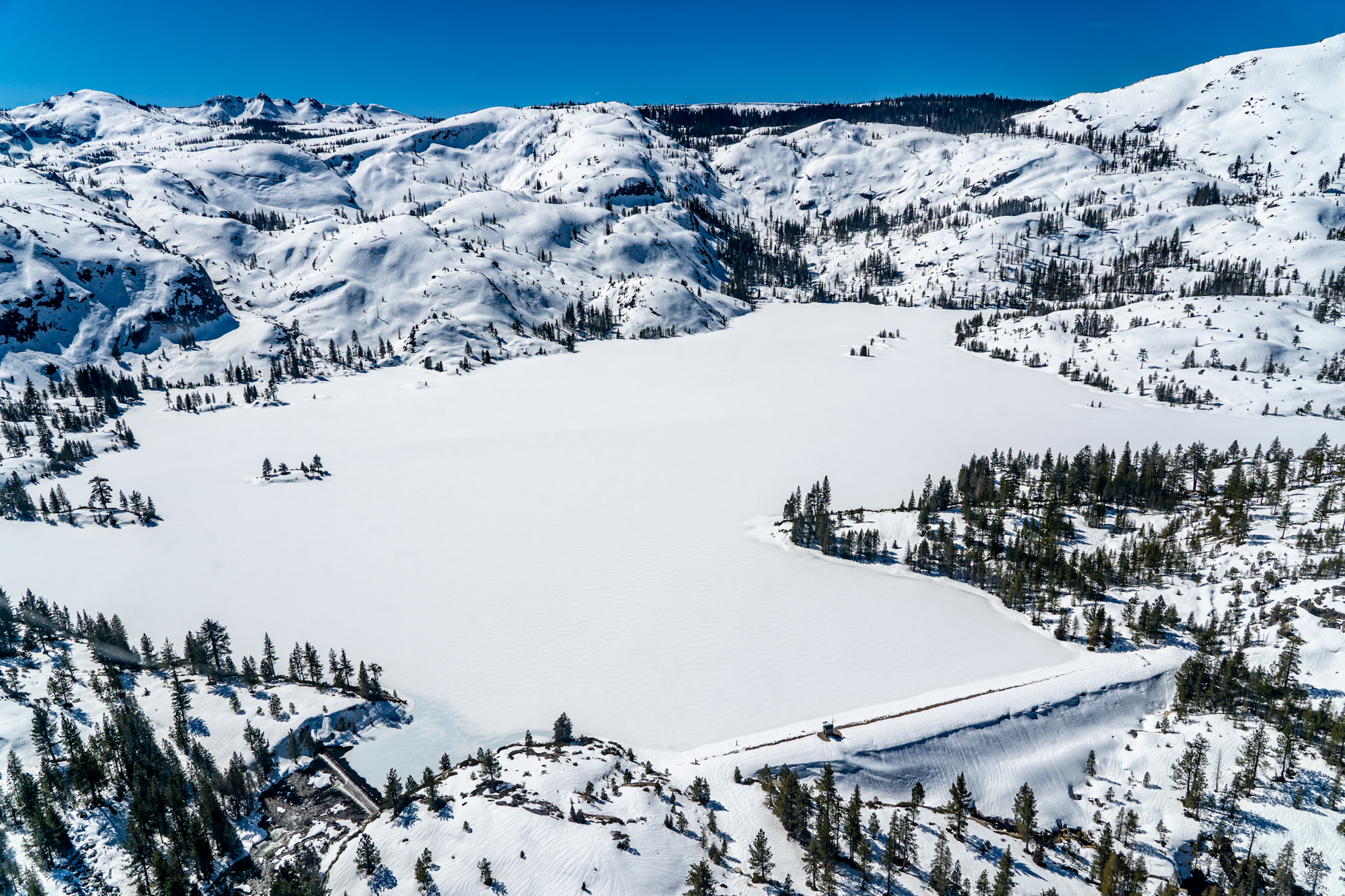Late storm boosts NID’s snowpack; April survey measures 98 percent of average

(Grass Valley, April 3, 2025) Spring has newly arrived, and snowpack on the Nevada Irrigation District (NID) snow courses are at 98 percent of average leading into warmer weather.
NID hydrographers conduct three official snow surveys each year in February, March and April. Measurements are taken on five snow courses at varying elevations to get a good overview of the amount of snow in the watersheds that provide the District with water. Results of the snow surveys are used to predict water availability locally and statewide.
The April survey, conducted on March 25-26, found the average water content was 33.0 inches or 98 percent of the historical average:
- NID’s highest course, Webber Peak, at 7,800 feet, had 108.6 inches of snow with a water content of 42.5 inches (survey taken on March 25)
- English Mountain snow course (7,100 ft.) had 101.4 inches of snow with a water content of 43.3 inches (survey taken on March 25)
- Webber Lake (7,000 ft.) had 85.1 inches of snow with a water content of 33.3 inches (survey taken on March 25)
- Findley Peak (6,500 ft.) had a snowpack of 70.1 inches with a water content of 29 inches (survey taken on March 25)
- Bowman Reservoir (5,650 ft.) had 41.6 inches of snow with a water content of 17 inches (survey taken on March 26)
- At the lower Chalk Bluff snow course (4,850 ft.) on the Deer Creek watershed, 2.6 inches of snow was present with a water content of 0.9 inches, as of March 26 (the Chalk Bluff numbers are not included in the total average).
The snow water equivalent is an indicator of how much water the snowpack contains. This helps water managers plan for water use.
Notably, for the season, precipitation at Bowman Reservoir was 60.92 inches as of March 26. That’s 107 percent of average.
Water storage is in good shape, yet water deliveries cut off: emergency water shortage continues
District reservoir storage is above average with 248,290 acre-feet on March 26, 2025. That is 92 percent of capacity, which is 113 percent of average.
“The continuation of storms through March has kept District reservoirs full and spilling,” said Thor Larsen, NID’s Water Resource Superintendent.
Unfortunately, the District remains in an emergency water situation. Similar to last year, water deliveries will be cut off while Pacific Gas and Electric Company (PG&E) continues to make repairs to its infrastructure at Lake Spaulding.
“Although snowpack conditions are near average, our foothill reservoirs will not benefit from the runoff due to the ongoing repairs of PG&E's Spaulding 1 and Spaulding 2 powerhouses,” Larsen said.
Track NID river and reservoir data, click here.
See updates about how damage infratutures impacts NID, click here.

